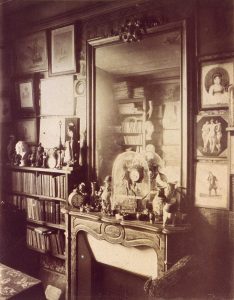 Collection, Modernism and Social Identity.
Collection, Modernism and Social Identity.
Art Collecting in Europe Between 1880 and 1940 (online, 15-16 Sep 21)
online / Centre for Historical Research of the Polish Academy of Sciences in Berlin, Sep 15–16, 2021
Deadline: May 10, 2021
The end of the 19th century has opened a new chapter in the history of art collecting. For centuries collecting had been mainly perceived as the privilege of royalty and nobility. The era of industrialization followed by significant social changes led to shifts in power, both in politics and culture. A new class arose in Europe – the bourgeoisie. Collecting enabled members of the bourgeoisie to gain access to the circles of art lovers in the higher ranks of society. This practice had, in general, an imitative character, but at the same time, each collection was unique and therefore often used as a means of distinguishing oneself. Many of the collections functioned as instruments by which merchants and bankers showed their status and created a distinctive identity to differentiate themselves from the traditional aristocratic collectors. This sort of collecting – appealing to collecting traditions and at the same time trying to break with them – could be seen as a subversive strategy in creating the social identity of the 19th century bourgeoisie. Within this strategy, the European bourgeoisie gave art collecting a distinctive, modern character. Last but not least, their interest in contemporary art has supported new art movements, whereas legacies provided the core collections of many of today’s most significant museums. Although the rise of this new collecting scene between the 19th and 20th century took shape in different ways in the various countries of Europe and did not take place at the same time everywhere, clear parallels can be distinguished. Bearing this in mind, the aim of the seminar is to shed light on the complexity of the collecting phenomenon in Europe at that time and to question how heterogeneous it was and what role the aristocracy and bourgeoisie played in creating this diversity.
The aim of the seminar is to analyze the phenomenon of art collecting at the turn of the 20th century, taking into account the history of art as well as cultural and social history. It is an attempt to create an international comparative perspective on the nineteenth century European art collecting. The following questions will be discussed: what sort of tension and interaction occurred between the aristocratic and bourgeoisie model of collecting? Was it only a one-way inspiration or did some of the nouveau riche collections influence the elder elites? Were aristocratic collections reflecting on the changing social situation? What was the role of the ethnic origin of the bourgeoisie collectors? What impact did the bourgeoisie of Jewish origin and their “Jewishness” have on art collecting, art patronage, and on the later established modern art market and art critic? Was art an important tool in creating new identity during the process of emancipation and secularization? Was collecting a sort of legitimization of national identity? Did gender determine a way of art collecting? Was gender an important factor for prominent women collectors who were engaged in a practice considered as a “typical” activity for men?
A peer reviewed publication is planned for 2022.
Please send your proposal (max. 300 words) along with a short information on your research interests and your current affiliation to Milena Woźniak-Koch: milena.wozniak-koch@cbh.pan.pl
Deadline for submission: 10th May 2021
Notice: due to the unpredictable Covid-19 situation, the seminar will take place on-line. Further information will be provided directly to the seminar participants.

Leave a Reply
You must be logged in to post a comment.